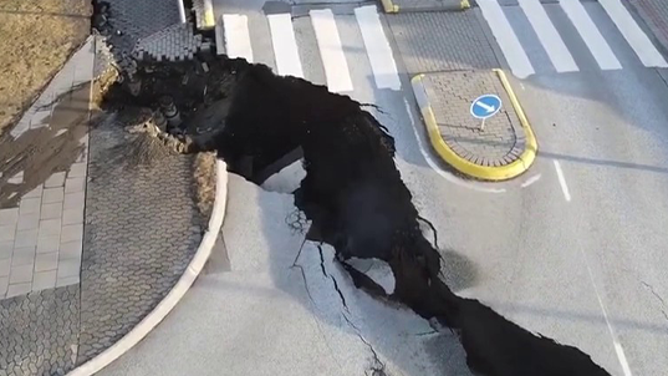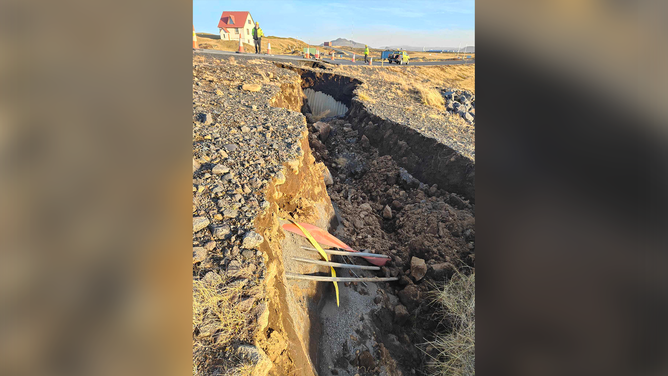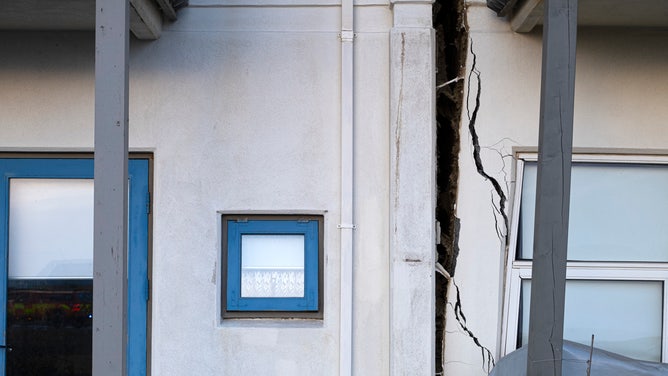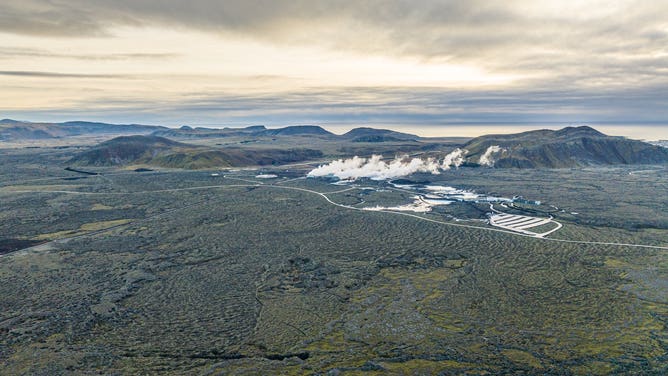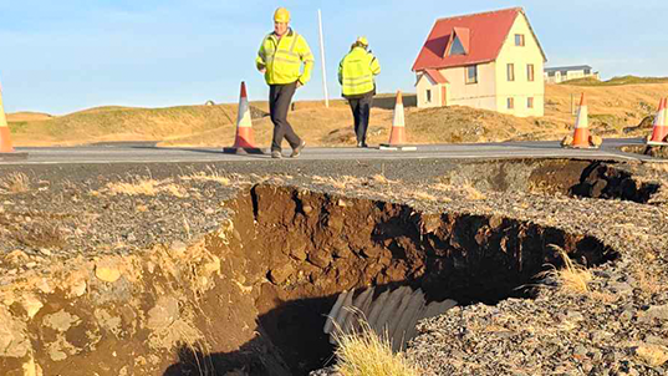Iceland's volcano monitoring now hampered by ongoing severe weather, officials say
Strong winds, waves and rain have been reducing the accuracy of the measurement tools that scientists need to forecast a volcanic eruption in Iceland. Officials say they can give, at a maximum, 30-minutes of notice of the eruption.
Only 30-minute warning before Iceland volcanic eruption, IMO cautions
FOX News Correspondent Bryan Llenas is on volcano watch in Iceland. He tells FOX Weather the very latest from scientists who agree that the island nation would only get a 30-minute warning before an eruption.
GRINDAVIK, Iceland – Storms now pounding Iceland with strong winds and heavy rains are hampering sensitive volcanic monitoring as Grindavik, a town of 4,000 now directly over a magma dike, nervously waits for what officials say is an imminent volcanic eruption.
"IMO has increased surveillance in and around Grindavík and the area around Hagafell," the Icelandic Met Office wrote in its latest advisory. "The effectiveness of this surveillance depends on the high sensitivity of earthquake and real-time GPS measurements, which are highly dependent on weather conditions."
Winds blowing to 50 mph with higher gusts are also whipping up waves crashing ashore, mimicking small earthquakes.
WHAT HAPPENS BEFORE A VOLCANO ERUPTS?
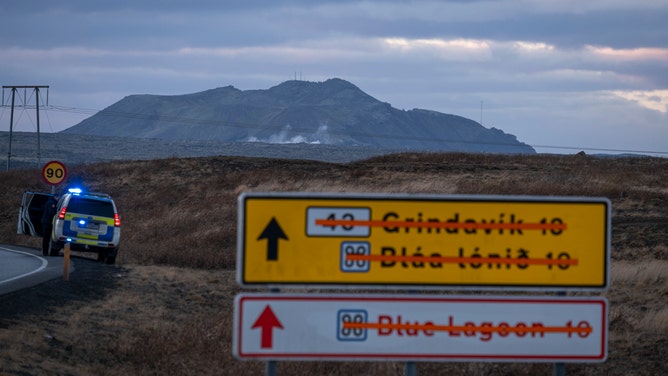
The road to Grindavik is closed by emergency services and police. Access is only possible with special permits.
(Raúl Moreno/SOPA Images/LightRocket / Getty Images)
"Ocean waves also create microseisms that overwhelm the low-frequency detection capabilities of seismometers on the Reykjanes Peninsula," continued the IMO. "Given the weather forecast for the next two days, which indicates precipitation and significant wind, it can be expected that both seismic monitoring and real-time GPS observations will be affected."
The IMO also fears that fog and hail could shroud visual confirmation of the eruption.
Evacuations almost two weeks ago
Residents of the town fled their homes 12 tense days ago when the IMO put the area under high alert as magma pooled under the town. The magma intrusion has been setting off up to 2,000 earthquakes per day as it presses up the surface of the Earth. Photos and video show torn streets and a twisted landscape.
CAN VOLCANIC ERUPTIONS AFFECT THE WEATHER?
"There's no certainty about whether we will be able to get back to our home or not," Hans Vera, an evacuated resident told, FOX Weather earlier this month. "It just depends on where the probable eruption is going to happen. If it's coming up in the middle of town, which is a possibility, then there's a great chance that all of Grindavik, all of town, all of the villages is going under."
Quake activity decreasing, maybe
The IMO reported that the frequency of quakes appears to have gone down. As of early afternoon Wednesday, only 50 temblors were recorded, a vast difference from the 1,500 to 1,800 quakes per day in recent weeks. But the weather is causing confusion and officials don't know if activity is actually decreasing.
"The intense weather affecting the country has an impact on the sensitivity of the seismic monitoring system to detect the smallest earthquakes, making it difficult to assess whether the seismic activity is decreasing overall," wrote the IMO.
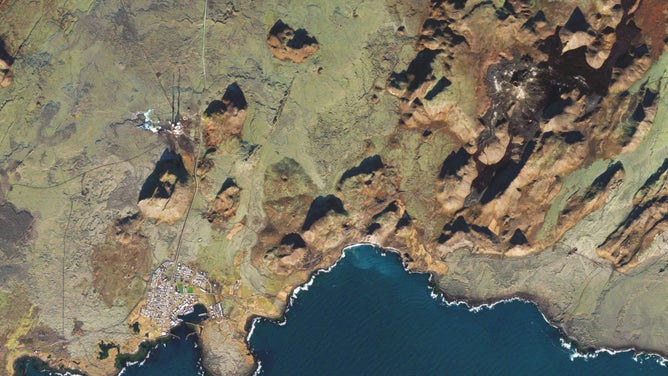
A satellite view of the coastal town Grindavík, Stóra-Skógsfell mountain peak, Blue Lagoon hot springs and Svartsengi Geothermal Power Plant, Geldingadalir volcano and Fagradalsfjall volcano on the Reykjanes Peninsula from late October.
(Gallo Images/Orbital Horizon/Copernicus Sentinel Data 2023 / Getty Images)
Authorites told FOX News Correspondent Bryan Llenas that there is still a high chance of an eruption, but that chance decreases as time goes on.
"Iceland is incredibly concerned because the magma is so close to the surface that they think at most we will get a 30-minute warning before an eruption takes place," Llenas told FOX Weather Tuesday.
Some residents have had police escorts into their homes for 10 to 15 minute visits to collect anything precious or essential. But, not all residents were given the go-ahead.
"I still did not get to go and pick up our personal stuff while some went twice already," wrote a frustrated homeowner on the Department of Civil Protection and Emergency Management social media page. "I registered at island.is and still did not receive any response. When I will be finally allowed to go? Waiting for 12 days and counting."
WHAT WAS THE MOST DESTRUCTIVE VOLCANIC ERUPTION IN US HISTORY?
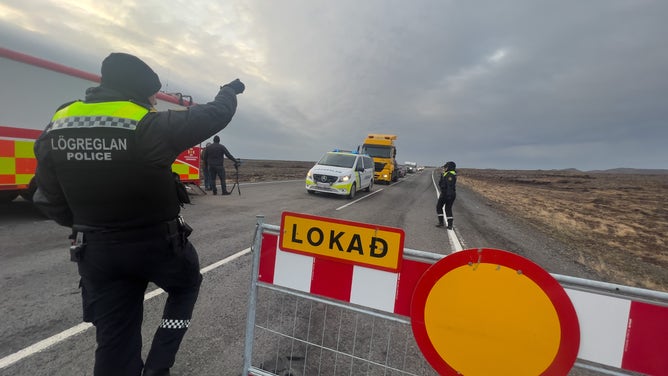
GRINDAVIK, ICELAND - NOVEMBER 14: Police direct traffic out of Grindavik on November 14, 2023. For the second day residents were allowed in to quickly collect personal belongings. (Photo by Micah Garen/Getty Images)
(Getty Images)
Controlling lava
In a press conference Tuesday, the Icelandic Civil Defense said it called in experts to explore the possibility of pumping seawater on any lava that may emerge, to halt a flow. The director pointed to a sudden 1973 eruption from a volcano Iceland thought was dormant.
Limited monitoring capabilities misplaced the actual eruption site, according to VisitIceland.com. A mile long fissure opened up spewing lava and ash which consumed 400 buildings. The lava flow added almost a square mile to the town and fishing village. The town got innovative when the molten rock threatened the seaport.
"They established an extensive network of pipes and pumps to spray seawater onto the lava, slowing its advance and redirecting its flow," states VisitIceland.com. "This remarkable endeavor, involving 6.2 million tons of seawater, successfully saved the harbor."
VOLCANIC GAS FORCES RENEWED EVACUATIONS IN GRINDAVIK AMID ONGOING FEARS OF ERUPTION IN ICELAND
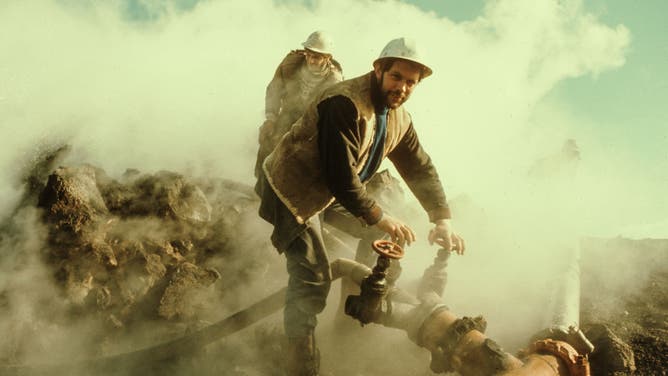
HEIMAEY, ICELAND - Volcano eruption on Heimaey Island in Iceland on 23 January 1973. Firefighters work to control the lava flow by cooling it down with water so it does not flow into the harbor.
(Fred Ihrt/LightRocket / Getty Images)
ICELAND RUSHES TO BUILD DIKE AIMED AT PROTECTING POWER PLANT FROM VOLCANIC ERUPTION
Meantime in the present day, the government is building two walls, 3-miles long and 25-feet high to divert the magma away from the neighborhood and a geothermal energy plant serving over 30,000 families.
"They continue to monitor that ten-mile long tunnel of magma. At this point, they think the most likely eruption point is 2 to 6 miles north of Grindavik. And at that point, it depends on which way the lava will flow," said Llenas. "They hope to have enough time to put up barriers to divert it and try to save the town in a worst-case scenario."
The rough weather will taper off Thursday into Friday.


